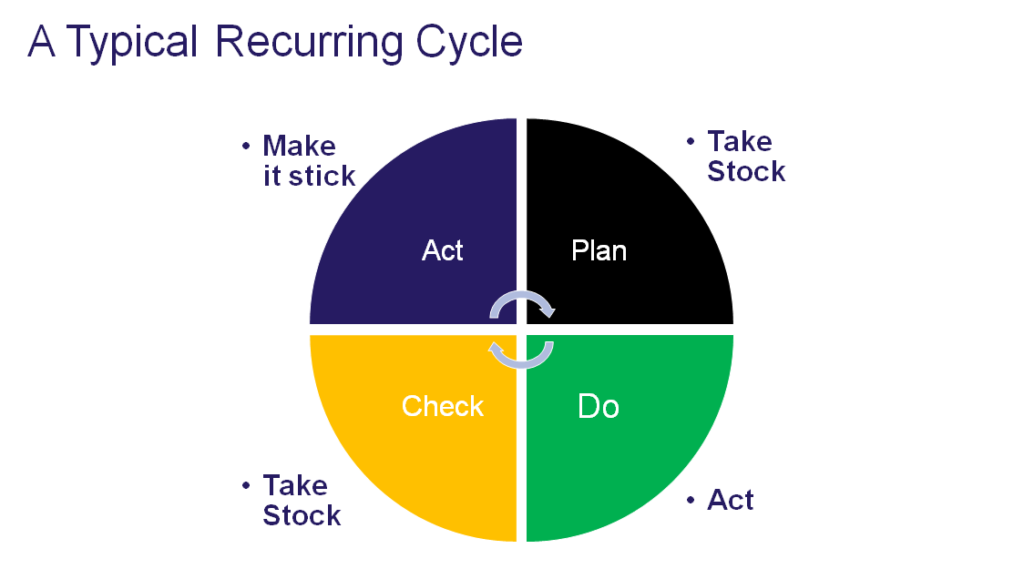Identifying Change That Works
Knowing what will need to change so that things get better for you can be very daunting. The common thought can be “I can’t see the woods for the trees”. So how can you identify what change works for you?
There is an old adage that says each journey starts with a single step. It is very true here, but fear of not knowing the consequences often makes us freeze and do nothing. Funnily enough, that first step might not be in the right direction, but, once it’s made you might find that you can see how your journey will unfold a lot better.
To make sure that you identify change that will work for you, there are three steps to go through – and each one is as vital as the other. There are certain times when you will move through these elements a number of times before the change is actually completed. These three steps are:
- Taking Stock
- Acting Decisively
- Making Change Stick
Pictorially, this is what it will most probably look like you are doing.

Taking Stock
What this means is that you need to look at the results of what you are doing, and how you are doing it. Another common saying is “if you are not moving forwards, you are, in reality, going backwards”. So, the main message here is doing nothing will, over time, weaken your own position in your sector and could lead to the failure of the business. Looking at your business, critically, is the only way to move forward and change surviving into thriving.
This critical review will show where you are falling behind, or where changed has not happened for a long time. These are the places where it is most likely a change will have the most positive impact. Utilising the most appropriate external support will bring about the best result.
This type of activity will also be useful, as shown above, after an action has taken place to make sure that what has happened is going to be of benefit.
Acting Decisively
After taking stock of each situation the activities should be clear and concise so that the outcome should be easily recognised. This is the “Do” element of the diagram above.
There should be check points to make sure that the action is understood before it is carried out. How to know it has been actioned appropriately is key to successful change.
It is not a failure if a suspected outcome is not the one that is realised, it is a learning point. The realised outcome could be better than is expected, so this as important a lesson as an outcome that is not.
Either way, when reviewing the outcome of a particular set of actions (as a “taking stock” process) you can make decisions on how to change things, or research how to amend the next set of actions to make things better.
Making Change Stick
This is the “Act” part of the diagram and will make sure all future reviews and research have a reference point. Without a reference point any change you think you need will not stick, it’s just human nature.
For so many businesses there are no written plans, policies, procedures and/or performance indicators. Creating these is a must.
Policies and procedures actually back up the performance indicators in your business plan to identify what is working well and what is not. This includes how you cover the legal obligations you have.
Without something to check back to you cannot by definition, review the effectiveness of a change to what you do and/or how you do them.
Once what is working better has been identified, change the documentation your need to and make sure that you can continue to support it by changing anything necessary, including IT solutions. You can’t do it all on your own. So remember, the better your team is the more beneficial your change will be.

There is so much more information available, some of it very detailed. Please look through the other blogs and see if the information you want is provided.
Related Articles:
- https://eyebray.com/why-is-change-difficult/: This has some tips about planning change.
- ttps://eyebray.com/how-can-i-keep-calm-in-a-crisis/: Which explains how some businesses can make changes relatively quickly.
- ps://eyebray.com/how-to-know-when-change-is-right-for-you/ a different view of how change can be identified .
If not, get in touch by emailing us at [email protected], or to call us on either 07943 211611 or, 01708 930677.

Ian Braysher
Eye Bray Ltd